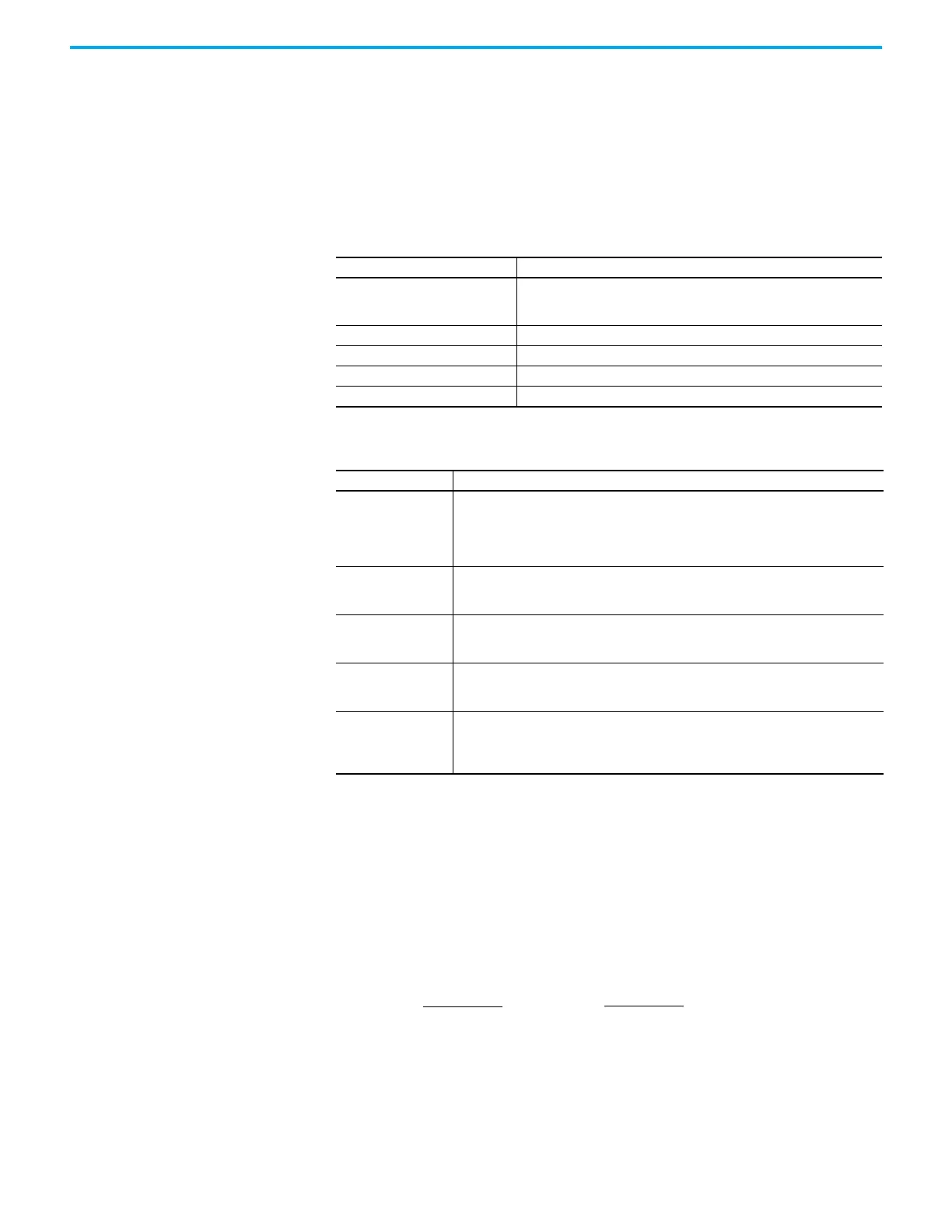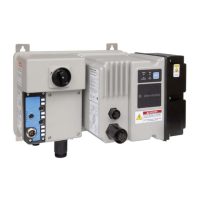328 Rockwell Automation Publication 2080-UM002N-EN-E - November 2022
Appendix E PID Function Blocks
How to Autotune Before you autotune, you need to:
• Verify that your system is constant when there is no control. For example, for
temperature control, process value should remain at room temperature when there is
no control output.
• Configure the set point to 0.
• Set Auto Input to False.
• Set the Gain parameter as follows:
• Set the AT_Parameter as follows:
During autotune, the controller will automatically set the process value to zero. To autotune,
perform the following steps:
1. Set the Initialize input to TRUE.
2. Set the AutoTune input to TRUE.
3. Wait for the Process input to stabilize or reach a steady state.
4. Note the temperature fluctuation of the process value.
5. Calculate deviation value with reference to the fluctuation. For example, if the
temperature stabilizes around 22 °C (72 °F) with a fluctuation of 21.7…22.5 °C
(71…72.5 °F), the value of ‘ATParams.Deviation’ is:
6. Set the deviation value, if you have not set it yet.
7. Change the initialize input to FALSE.
8. Wait until the ‘AT_Warning’ shows 2. The autotune process is successful.
9. Get the tuned value from the ‘OutGains’.
Table 89 - GAIN Parameter Values
GAIN Parameter Value
DirectActing
According to operation:
TRUE (for example, Cooling), or
FALSE (for example, Heating)
DerivativeGain 0.5
ProportionalGain 0.0001
TimeIntegral 0.0001
TimeDerivative 0.0
Table 90 - AT_Parameter Values
AT Parameter Recommendation
Load
Every ‘Load’ provides a saturated process value over a period of time. Adjust the load to
the value for the saturated process value you want.
IMPORTANT: If a load of 40 gives you a process value of 30 °C over a period of time, and
you want to tune your system to 30 °C, you should set the load to 40.
Deviation
This parameter plays a significant role in the autotune process. The method of deriving
this value is explained later in this section. It is not necessary to set this parameter prior
to autotuning. However, if you already know the deviation, it is fine to set it first.
Step
Step value should be between 3*Deviation and ½ load. The step provides an offset for the
load during autotuning. It should be set to a value high enough to create a significant
change in process value.
ATDynamSet
Set this value to a reasonably long time for the autotune process. Every system is
different, so allow more time to a system with a process value that takes longer to react
to change.
ATReset
Set this parameter to TRUE to reset the output to zero after the autotune process
completes.
Set this parameter to FALSE to leave the output at load value after the autotune process
completes.
For °C:
22.5...21.7
2
= 0.4
For °F:
72.5...71
2
= 0.75

